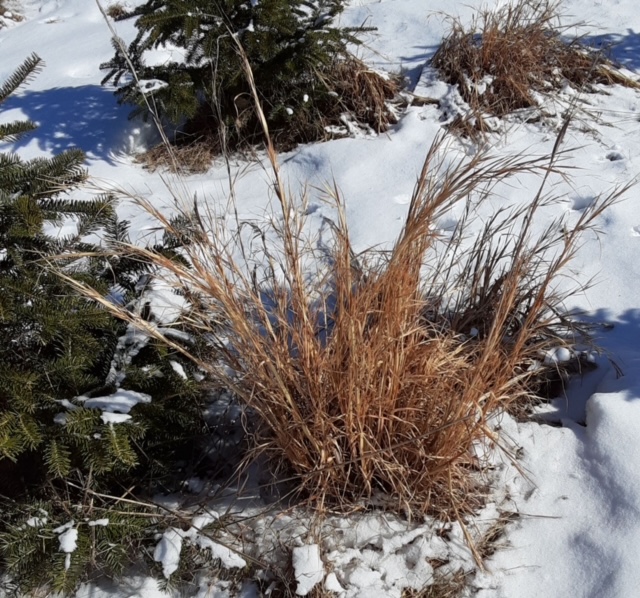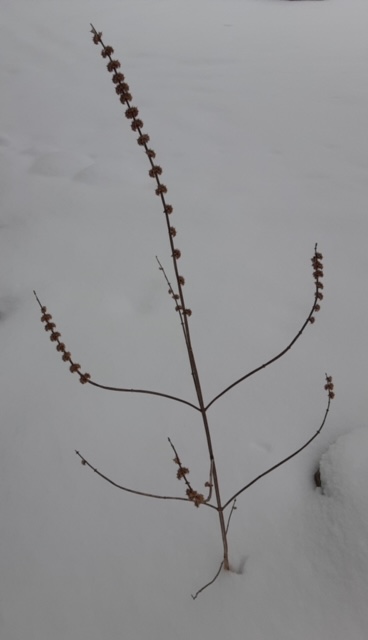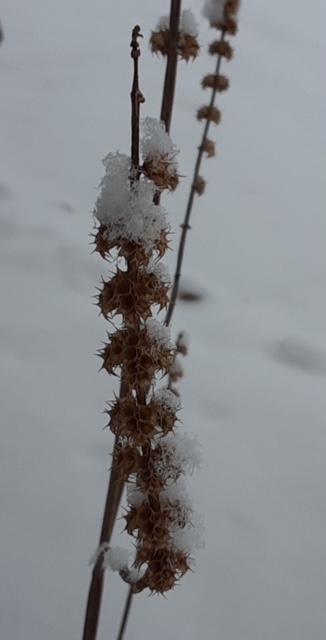By: Susan Sprout
Broom-sedge
Broom-sedge is a clump-forming bluestem grass – it’s not a sedge at all! Native to southeastern United States, it can survive northward to the Great Lakes. Growing two to three feet tall in a narrow, upright vase-shape, its withered vegetation which has withstood the winter is more obvious and frequently more striking than in summer.
Member of the Grass Family, POACEAE, the genus of bluestem grasses is Andropogon, the Greek names for “man’s beard”. Seed earlets with a long hairy bristle and feathery stalks give these grasses a soft whitish color when the sun shines on them. Their hairy appearance diminishes as winds and small birds remove seeds.
You can find clumps of this perennial grass scattered here and there across sunny pastures, in old fields ,and along open woods. They are invaders of disturbed land and have dense fibrous roots helpful against erosion, but may also be an indicator of poor, infertile soils.
In Australia, our broom-sedge is known as “whiskey grass” because it was used as packaging around bottles of American whiskey and accidentally introduced there!
Common Motherswort
Keep your gloves on when you reach out to touch this plant’s burr-like seed pods whirled around its stem! Common Motherswort has a prickly quality about it, both during its growing season and as an attractive addition to the winter snowscape.
Its square stem appears to be interrupted with clusters of small tubes, working their way to the top of an almost five foot flower spike. If you look closely, you can see the tiny, but determined, prickles surrounding each tube that had originally held seeds. Identified as a medicine plant since the time of the ancient Greeks, Motherswort was moved around a lot in Europe and Asia. It came to America with colonists as a useful plant for female disorders, hence the name. The “Wort” part comes from an Old English word meaning root or plant.
A member of the Mint Family, LAMIACEAE, Motherswort has the required square stem, opposite leaves, and scented leaves. Its scientific name, Leonurus cardiaca, indicates that some folks thought its tall, leafy stem resembled a lion’s tail. Think of that if you go to pull this plant from its preferred habitat of stream banks and roadsides, old fields and railroad cinders!
Find out what’s underfoot with NPC member and environmental educator, Susan Sprout! Catch up on past issues of Underfoot: Introduction & Bloodroot, Trout Lily & Coltsfoot, Blue Cohosh & Dutchman’s Breeches, Ground Ivy & Forget-Me-Nots, Goldthread & Wild Ginger, Common Mullein & Sweet Woodruff, Aniseroot & Butterfly Weed, Myself , Jewelweed & Soapwort, American Pennyroyal & Great Lobelia, Boneset & Common Ragweed, Pokeweed & Blue Chicory, Prickly Cucumber & Wintergreen, Beech Drops & Partridge Berry, Pipsissewa & Nostoc, Witch Hazel, Plantsgiving, Black Jetbead & Decorating with Winterberry, Wild Bergamot & Bald Cypress Tree, Galls & Bittersweet, American Beech & Bagworm, Seedpods & American Chestnut, Northern Bayberry & Sweet Fern.




